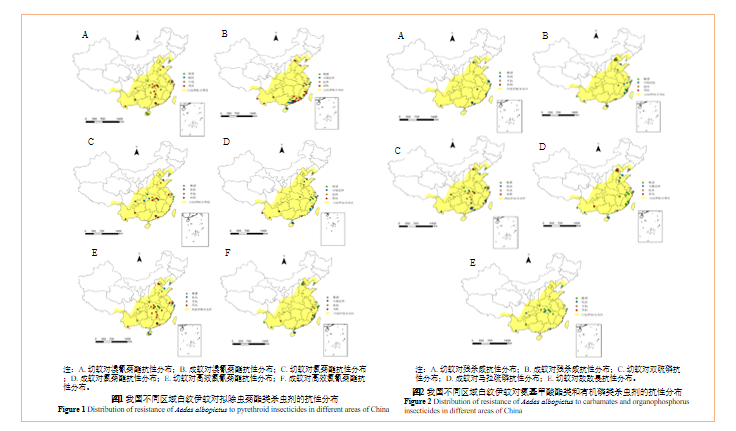National Disease Vectors Surveillance Special
ZHAO Ning, GUO Yu-hong, WU Hai-xia, LIU Xiao-bo, YUE Yu-juan, REN Dong-sheng, LI Gui-chang, SONG Xiu-ping, LU Liang, LIU Qi-yong
Objective To investigate the species, composition, density, distribution, and seasonal fluctuation of mosquitoes in China, 2019, and to provide a scientific basis for the prevention and control of mosquito-borne diseases. Methods The mosquito vector surveillance data of 88 surveillance sites in 30 provinces (autonomous regions and municipalities directly under the central government) of China in 2019 were collected. The light trapping and human-baited double net trapping methods were employed to monitor adult mosquitoes, and the Breteau index (BI), scoop capture, and route methods were adopted to monitor mosquito larvae. Adult mosquitoes were monitored twice a month, and mosquito larvae were monitored once a month. Excel 2013 software was used to analyze the mosquito vector surveillance data. Results The mean density of mosquitoes was 9.81 mosquitoes/lamp·night in China in 2019. Culex pipiens pallens/Cx. pipiens quinquefasciatus accounted for 57.73% of all captured mosquitoes, followed by Anopheles sinensis, Cx. tritaeniorhynchus, Aedes albopictus, and Ae. aegypti, which accounted for 20.27%, 12.22%, 2.29%, and 0.02%, respectively. The mosquito densities in Inner Mongolia, Hubei, Qinghai, Yunnan, and Hunan provinces were relatively high, being 22.60, 21.72, 17.14, 12.71, and 10.18 mosquitoes/lamp·night, respectively. The results of seasonal fluctuation by light trapping, human-baited double net trapping, scoop capture, and route methods all indicated that the peak period of mosquito activity was from June to September, and the highest peak was in July or August. The results of the Breteau index method indicated that the peak period of Aedes larvae was from April to September. The highest density of adult mosquitoes was in livestock sheds, being 36.29 mosquitoes/lamp·night, while the highest Breteau index of mosquito larvae was in waste tyre recycling factories, being 19.25 mosquitoes/lamp·night. Conclusion The dominant mosquito specie is Cx. pipiens/Cx. pipiens quinquefasciatus in China. It is recommended to implement prevention and control measures such as overwintering mosquito elimination and environment management from April each year in all provinces (autonomous regions and municipalities directly under the Central Government). In 2020, the main prevention and control measure is to pay more attention to timely cleaning of the mosquito breeding sites in residential areas, waste tyre recycling factories, and waste collection areas, so as to prevent and control mosquito-borne diseases from the origins.

